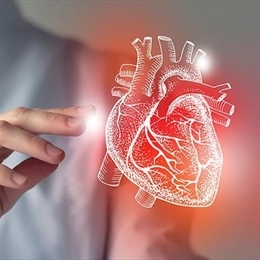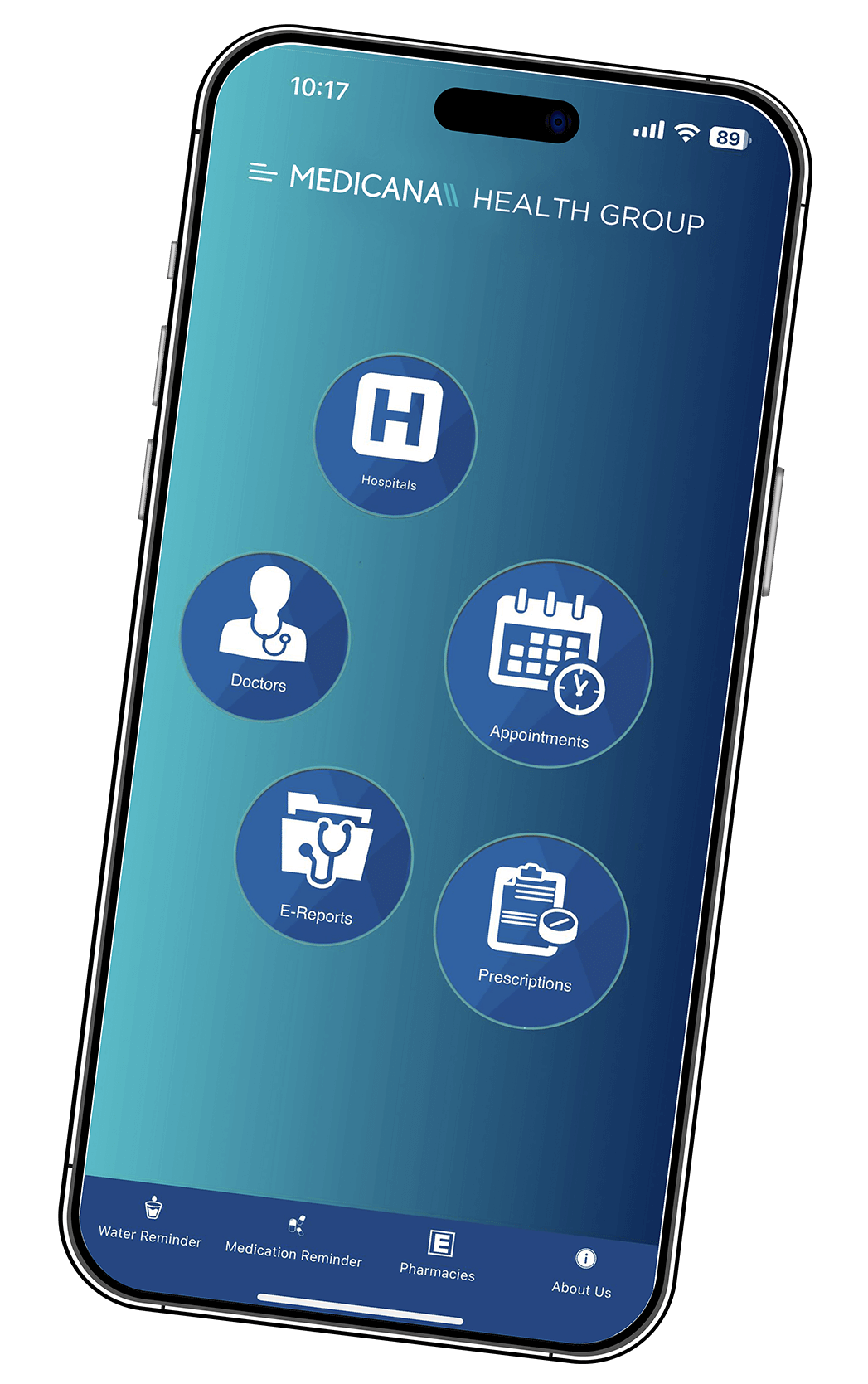Stomach Cancer

Overview
It is an organ of the digestive system between the esophagus and the duodenum. It is located behind the ribs in the upper left quadrant of the abdominal cavity. The expandable structure allows temporary storage of foods. The stomach consists of four major parts: the fundus, the cardia, the corpus (body), and the antrum (the last part of the stomach). The stomach secretes digestive fluids to break down foods chemically and physically. After mechanical digestion in the mouth, the stomach digests foods using both chemical and physical methods to allow the absorption of nutrients into the body. The gastric juice is principally acidic. The mucosa that lines the interior surface of the stomach forms a barrier against the hazardous effects of the acidic environment.
Stomach cancer is a malignant tumor that originates from the gastric mucosa. The initial stage is usually an ulcer that starts in the mucosa. It can penetrate the gastric wall and spread to neighboring organs and distant body parts through blood and lymphatic circulation.
Most cases are diagnosed at age 50 to 60 years, two times more common in men than women. Recently, most stomach cancers start at the junction of the esophagus and the stomach.
Risk Factors:
Eating habits are the most crucial cause of stomach cancer. Salty and smoked foods, foods that contain a fungus called aflatoxin (common in red pepper that is not stored under appropriate conditions), excessive consumption of pickles, Helicobacter pylori infection in the stomach, cigarette and alcohol (their association increases the risk further), chronic gastric inflammation, family history, and gastric polyps are among known risk factors.
Type:
The more common types of stomach cancers are as follows:
Adenocarcinoma: It is the most common type of stomach cancer. It originates from gastric cells that produce mucus and gastric juice.
Squamous cell cancer: It is the second most common type.
Gastrointestinal stromal tumors: They are rare and start from the connective tissue of the organs in the digestive system.
Carcinoid tumors: These tumors start in the hormone producing tissues of the stomach. It is a rare type of cancer.
Gastric Lymphoma: It is a rare type of cancer. It originates from lymphoid tissues.
Symptoms:
Stomach cancer causes the following symptoms:
• Epigastric distension
• Stomach ache,
• Feeling full after eating small amount of food
• Bleeding
• Nausea,
• Difficulty swallowing.
• Abdominal discomfort around the location of stomach
• Fecal occult blood
• Blood in sputum, albeit rare,
• Vomiting.
• Tiredness
• Bleeding in stomach or intestine
Symptoms of advanced-stage stomach cancer are a function of the involvement of other organs and lymph nodes (enlarged liver, accumulation of fluid in the abdomen, jaundice, enlarged lymph nodes above the collarbone, etc.).
Prevention:
As is the case for all other cancers, prevention of stomach cancer is also to eliminate or minimize manageable risks. Nutrition is the most critical issue in the prevention of stomach cancer. Too salty foods, canned foods, processed foods (especially meats), and excessive alcohol and tobacco use increase the risk of stomach cancer.
On the other hand, healthy life recommendations, such as regular exercise, a diet rich in fruits and vegetables, and avoiding and quitting tobacco products and alcohol, will help to prevent stomach cancer as well as all other cancers.
Diagnosis:
As is the case for all cancers, early diagnosis plays a tremendous role in the success rate of the treatment. Endoscopic is the primary diagnostic modality for stomach cancer. A thin tube equipped with a light source and camera is inserted into the mouth and advanced to the stomach; thus, the entire stomach and the first segment of the duodenum are examined. If a suspicious area is observed, biopsy specimens are taken, and a definitive diagnosis of the cancer is made.
Before the treatment is instituted, some tests are required to decide on the best treatment after the presence of the disease is verified. Imaging studies, such as computerized tomography, magnetic resonance imaging, and abdominal ultrasound, help determine the grade and stage of the disease.
Although not routinely used, laparoscopy under general anesthesia is an option in selected patients.
Treatment:
All data about the patient and tumor are collected, and the most appropriate treatment approach is determined. When possible treatment options are reviewed, weighing potential benefits against possible adverse effects and risks is necessary.
Correct identification of type, stage, and grade plays a significant role in determining the best treatment for stomach cancer.
Cancer stages are usually symbolized by the Roman numbers I to IV. Stage IV is the most advanced stage of cancer. Each patient's treatment is planned by considering stage, age, general health status, and personal preferences.
Among the treatment options for stomach cancer are chemotherapy, targeted treatment, radiotherapy, and surgery. These treatments can be used directly to treat the tumor, or they are instituted to increase quality of life and relieve symptoms in advanced-stage cancers. Moreover, treatment options can be used alone or in combination.
Chemotherapy
Chemotherapy uses drugs to treat the cancer. The active substances of medicines kill the cancerous cells. Chemotherapeutic agents can be given into a vein or be taken by mouth. In the case of intravenous administration, a thin tube, called a catheter, is inserted into a great vein, and the chemotherapeutic agent is administered through this catheter throughout the treatment period.
One or more than one chemotherapeutic agents can be administered depending on the type of cancer and response to treatment. Active chemotherapy maintained for a particular time is followed by an "off" period. After the "off" period expires, the therapy resumes. Each sequential active and "off" period is called a cycle.
Side effects of the chemotherapy are a function of the chemotherapeutic agent and the dose. The most common side effects of chemotherapeutics include fatigue, nausea, vomiting, mouth sores, hair loss, and inflammation of the digestive system. Your doctor will also treat side effects caused by chemotherapy. If these side effects are severe enough to threaten your health, your doctor may advise you to suspend the treatment or to switch you to another chemotherapeutic agent.
Targeted Therapy
Targeted therapies are newer anti-cancer treatments compared to chemotherapy. These medicines target specific abnormalities that are present in cancerous cells. Before these medicines are started, cancer cells are analyzed in laboratories to determine whether they have particular mutations.
Radiotherapy
Radiation therapy aims to kill cancer cells by using high-powered energy beams. If the radiation source is out of the body and the beams are directed at the cancer, this treatment is called external radiotherapy. On the other hand, if the radioactive agent is placed at the locus of the tumor through a needle or a catheter, the method is called internal radiotherapy (brachytherapy).
Although radiation therapy can be the first-line treatment, it is usually used to kill cells that cannot be removed operatively. In the first-line treatment, radiotherapy is mainly combined with chemotherapy, and this modality is also called chemoradiotherapy.
Radiotherapy has a vast spectrum of side effects depending on the body part irradiated. Your doctor will explain the risks that apply to you.
Surgery:
Surgery is the principal treatment option for stomach cancer. The location of the tumor in the stomach and local and distant metastasis are the factors that are taken into consideration while gastric surgery is planned.
The amount of stomach to be removed is related to the exact location of the tumor. Gastrectomy is a medical term used for surgical removal of the stomach. In light of the preoperative diagnostic biopsy and imaging studies, your surgeon may decide to remove the entire stomach (total gastrectomy) or a part of it (partial gastrectomy). In addition, depending on the tumor-related factors, the lower one-third of the esophagus and the first segment of the small intestine (duodenum) can also be removed. Your surgeon will remove lymph nodes surrounding the stomach in all circumstances. Removing the mucosa alone may be sufficient if the stomach cancer is diagnosed early. This procedure, called mucosa resection, can also be performed during endoscopy.
Finally, extra procedures can be performed to relieve signs and symptoms caused by the spread of the tumor, along with the removal of the stomach in the stomach cancer surgery. Stomach cancer surgery is a major surgery, and it can lead to general complications (bleeding, infection, leakage, etc.) as well as digestive problems.
Stomach cancer surgery is a major surgery, and it can lead to general complications (bleeding, infection, leakage, etc.) as well as digestive problems.
If the entire stomach is surgically removed, a new stomach is reconstructed using other parts of the intestine. In this case, it may be necessary to feed you through a vein or a tube inserted into your intestines through the abdominal wall during recovery. Again, you will initially be allowed to eat small amounts to let your new stomach adapt to the digestion. Therefore, you should necessarily act in line with the eating program that your doctor instructs after the stomach cancer surgery.
Asking your questions about the treatment of stomach cancer, your life after treatment, rehabilitation, pain management, clinical studies, and all the questions in your mind about stomach cancer to your doctor will help you an informed participation in your treatment and alleviate your concerns.




























